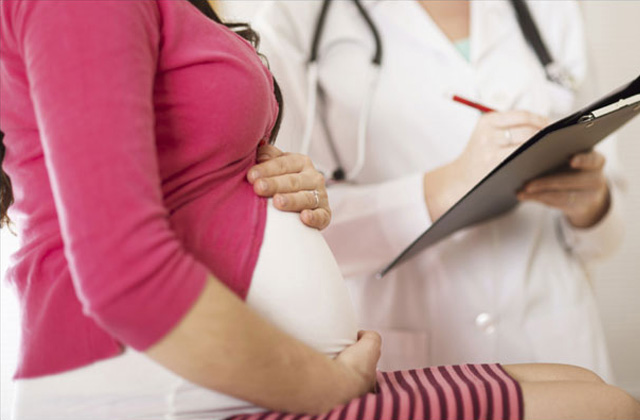Cerebral Palsy is a neurological group of conditions that affect the posture and movement of the body. It has varying degrees of severity and can range from tight muscles in the limbs and even in the mouth and tongue to uncontrolled movements and trouble with body balance. Cerebral palsy in pregnancy is a leading cause to begin with, simply because of the vulnerability to birth injuries.
A Guide for Cerebral Palsy Pregnancy
According to the American Pregnancy Association, there are mainly three types of cerebral palsy:
Spastic Cerebral Palsy:
Stiff muscles and pulled reflexes are common attributes of Spastic Cerebral Palsy and affect about eighty percent of the population. Abnormality in walking, and muscle weakness are other symptoms that can affect the whole body or just one side of the body.
Athetoid or Dyskinetic Cerebral Palsy:
Dyskinetic Cerebral Palsy creates a hindrance in the control of body movements and leads to the abnormal movement of the limbs.
Hypotonic Cerebral Palsy:
Hypotonic Cerebral Palsy causes overly relaxed movement of muscles and reduces the tone of muscles. It results in poor refluxes and even speech difficulty.
Ataxic Cerebral Palsy:
Ataxic Cerebral Palsy occurs the least among all cases and can be characterized by problems in balance and coordination and even in walking and performing simple tasks such as grasping objects and writing.
Mixed Cerebral Palsy:
As the name suggests, it combines the symptoms of multiple types of cerebral palsy, giving rise to a Mixed Cerebral Palsy. A common instance is the combination of spastic and dyskinetic forms of cerebral palsy.
The causes of Cerebral Palsy are mostly attributed to complications or birth injuries sustained before and during childbirth. This is known as Congenital Cerebral Palsy. While cerebral palsy from birth injuries is not limited to only the delivery room, it extends to the processes right before and after labour. What causes Congenital cerebral palsy during birth are a host of reasons, and can be listed as follows:
- The insufficient amount of oxygen reaching the foetus during childbirth, also known as Asphyxia, is a commonly cited reason for the occurrence of Cerebral Palsy. However, doctors and medical professionals believe that this actually accounts for minority cases of cerebral palsy.
- Infections in the mother during pregnancy that affect the placental membranes (chorioamnionitis) can lead to cerebral palsy in the child. This also includes urinary tract infection that could lead to premature birth.
- Prematurity is perhaps the biggest attribute that could lead to cerebral palsy. The low weight at birth and even bleeding in the brain causes hindrance to brain development and can lead to cerebral palsy. The occurrence of periventricular leukomalacia, which entails the destruction of nerves around the ventricles or fluid-filled cavities in the brain is another known cause.
- Similar to Asphyxia, when the placenta does not function properly, or even tears away from the uterine wall before childbirth could also lead to dearth of oxygen to the child, and can lead to cerebral palsy.
- Blood diseases like the Rh disease, that occur due to the incompatibility of the Rh factors of the mother and foetus, can result in severe brain damage in the foetus, and lead to cerebral palsy.
- Severe jaundice, caused by the building up of the component called bilirubin in the blood, poses a risk of permanent brain damage which results in Athetoid Cerebral Palsy.
Other known causes are generally listed as Acquired Cerebral palsy. This entails from head injury and brain damage that occurs within two years of birth. Some causes of Acquired Cerebral Palsy are as follows:
- Meningitis, encephalitis and other infections of the brain that can cause brain damage is a common cause for Acquired cerebral palsy.
- Physical injury to the head, from either a vehicular accident or even child abuse could result in permanent brain damage.
- Cerebrovascular diseases that prevent the flow of blood to the brain, such as a stroke or even bleeding in the brain because of blood clotting is another cause.
While these are commonly perceptible causes, the exact cause behind cerebral palsy is not known. Also, it is not a single cause that leads to cerebral palsy —it is rather a host of ‘causal pathways’, basically multiple factors work together in leading to cerebral palsy. For instance, premature birth itself is not the cause of cerebral palsy, but rather complications that could arise from a premature birth leads to cerebral palsy.
A common question that often pops up is if cerebral palsy hereditary in nature? Researches have shown than only 1% of cases result from familial cerebral palsy. This could be a sibling, or even a twin, however, the probability is quite low. The genetic factor comes into the picture when birth defects or complications are in question- premature birth, brain malformation or even heart problems that could trigger these causal pathways and lead to cerebral palsy.
Given that the complications arising from before and at birth give rise to maximum cases of cerebral palsy, can cerebral palsy be diagnosed before birth? While the severity of cerebral palsy can be understood only after birth, there are some ways in which the risk of cerebral palsy can be reduced.
Even before the pregnancy, the mother should not only be living a healthy lifestyle but also must take vaccination against diseases such as rubella and chickenpox, importantly before the pregnancy.
There are many steps one can take during the pregnancy to prevent cerebral palsy:
The first could be to take preventive measures against the flu, such as flu shots to protect both the mother and child. Any signs of infection such as fever or common cold should be checked by your healthcare provider immediately.
A second preventive measure could be to check the Rh compatibility between the mother and child, so as to avoid Rh disease, and forms of jaundice and kernicterus. Your healthcare provider could also treat you with ‘Rh immune globulin’ or the Rhogam, at the 28th week of your pregnancy, and after the birth to prevent the occurrence of kernicterus.
Discussing the possibility of a premature birth would allow both you and your doctor to take up further preventive measures to avoid complications at birth. In fact, research has shown that the consumption of magnesium sulphate in the anticipation of early premature birth could significantly reduce the risks of cerebral palsy.
Post birth, vaccinating your child against encephalitis, meningitis, Haemophilus Influenzae type B or HiB, and pneumonia could be a first step towards protecting your child from cerebral palsy. Treating your child in the occurrence of jaundice is crucial to prevent the worsening of the condition. And most importantly, one must take steps to observe children to prevent any form of physical injury.













